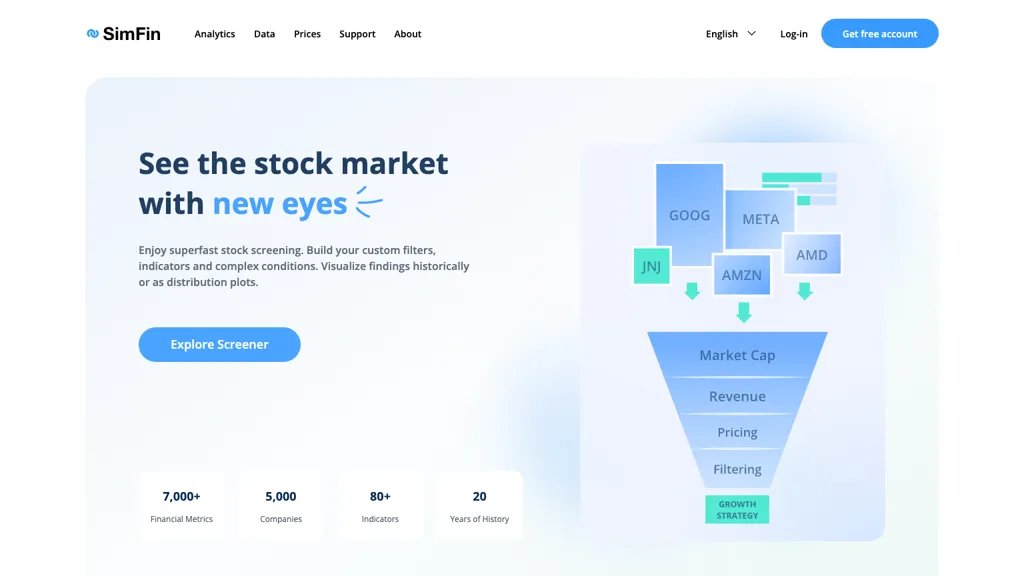When choosing a trading platform that utilizes AI to forecast or analyze stocks and market trends, customer service is a crucial aspect. A competent and responsive support team can make a big difference when it comes to solving issues, maximizing platform usage, or ensuring a smooth trade experience. These are the top 10 tips for evaluating the support provided by these platforms.
1. Evaluate Support Availability
24/7 Support: Ensure that the platform provides round-the-clock support for customers. This is particularly important for trading in real time and global markets.
Hours of business If there's no 24/7 support, you should ensure that support is in place during your business hours.
Holiday coverage: Verify whether support is offered during weekends or holiday hours, or during market closures.
2. Test Response Times
Initial response. Test your support by contacting them with a question.
Time to fix The problem: Don't just admit the issue however, you must also establish the time it will take you to resolve it.
Live chat Live chat: If live chat is accessible Test its responsiveness and effectiveness.
3. Examine the Support Options
Multiple channels: Make sure that the platform is compatible with multiple channels, like live chat, phone, email or social media.
Verify the availability and the reliability of your preferred support channels (e.g. chat, phone).
Self-service Options: To address issues quickly, you can use a comprehensive Knowledge Base as well as FAQs and Community Forums.
4. Assess Support Quality
Expertise: Ensure that the support agents you choose are knowledgeable in trading, platform issues and technical issues.
Problem-solving: Determine if the support agent can solve complex issues effectively or escalate them appropriately.
Professionalism Examine whether the interactions with support were professional, friendly and helpful.
5. Check for Dedicated Client Managers
Premium support: Make sure to see if users of higher-tier plans, or who are institutional users have access to a specific account manager.
Account managers should offer individualized support and advice that is proactive.
Building relationships: Make sure that the account managers are available and build long-term connections with users.
6. Review the Support Documentation
Knowledge base. Ensure that the platform has a well-organized database of guides, tutorials and tips on troubleshooting.
Check the platform's video tutorials and webinars to determine if they are available for visually impaired learners.
API documentation: Make sure you're a developer, see if there is an easy-to-read and precise API document.
7. Evaluate Peer and Community Support
User forums. Make sure your platform is active with a forum or user community where you can learn tips and tips and.
Search for groups on social media that aren't officially sanctioned (e.g. Reddit or Facebook). These groups allow users to speak about the platform.
Community engagement: Find out whether the platform's staff actively participates in discussions with the community or forums.
8. Evaluate Escalation Processes
Issues can be escalated: Make sure there is an appropriate procedure in place to problem resolution that is escalated to management or support levels.
Follow-up. Check that support is following up after the issue has been resolved.
Feedback loop - Determine if the platform gathers feedback from users to improve customer service.
9. Test Support during Critical situations
Market volatility: Examine the responsiveness of staff members during periods of high market volatility.
Technical issues: To find out how support can resolve an problem (e.g. log-in problem or discrepancy in data) Try to simulate the issue.
Trade execution: Determine whether support is available to assist with urgent trade-related issues (e.g. failing orders, delays in execution).
Look at the feedback of users
Online reviews: Research reviews of users on platforms such as copyright, G2, or Reddit to assess overall satisfaction with support.
Testimonials: Look for case studies or testimonials that highlight positive experiences in support.
Learn how the platform handles negative feedback and complaints.
Bonus Tips:
Support for the trial period: To check the reliability of the platform, you are able to test the support of the platform during a free trial period.
Support for languages. If you do not speak English, make sure to verify that support is available in the language of your choice.
Training and Onboarding: Find out if the platform offers onboarding classes or other training to help new users get started.
It is possible to evaluate customer service for AI platform for stock forecasting and analyzing by following these suggestions. When you do so you can choose a platform which provides quick, reliable and efficient assistance. The quality of customer support will enhance the overall experience on your platform and help you get the most from its capabilities. Have a look at the best ai stocks url for website advice including trading ai, ai investing platform, ai stock, ai stock trading bot free, best ai stock trading bot free, ai chart analysis, ai stock picker, ai stock market, ai for investing, options ai and more.

Top 10 Suggestions For Evaluating The Speed And Latency In Ai Stock Predicting/Analyzing Platforms
When looking at AI trading platforms which forecast or analyze price movements the speed and latency of processing are key factors, particularly for high-frequency and algorithmic traders. Even milliseconds of delay can influence the execution of trades as well as profitability. Here are the top 10 tips for evaluating the speed and latency of these platforms:
1. Real-Time data feeds can be used to evaluate the accuracy of the real-time data you have
Data delivery speed: Ensure that the platform delivers real-time data with a minimum delay (e.g., sub-millisecond latency).
The data source's proximity Find out if the platform's servers are situated near major exchanges in order to cut down on time to transmit data.
Data compression: Check if the platform is using effective data compression in order to speed up data delivery.
2. Test Trade Execution Rate
Order processing: The platform's ability to process and execute trades fast when an order is placed.
Direct market access (DMA). Be sure that the platform you're using offers DMA. DMA allows orders that are sent directly to exchanges to be processed without intermediaries.
Execution Reports: Check if your platform provides specific reports on the execution of orders, with timestamps.
3. Review the responsiveness of the Platform
User interface speed (UI): Measure how quickly the platform's user interface responds to your inputs.
Chart updates: Make sure that visualisations and charts update in real-time and without delay.
Performance of mobile apps When you install a mobile app on your smartphone, make sure that it is as responsive as its desktop version.
4. Look for infrastructure with low latency.
Server Locations: Check that the platform has servers that have low latency, located close to major hubs for financial exchanges or financial hubs.
Co-location Services: Verify whether the platform permits co-location. This will allow you to save your trading algorithm on servers located near the Exchange.
High-speed Networks: Check the use of high-speed, fiber-optic network or other technologies with low latency.
5. Assess backtesting and simulation speed
Check the speed at which your platform is able to analyze and process the historical data.
The latency of the platform must be minimal enough to allow for real-time simulations of trades.
Parallel processing: Find out whether the platform uses parallel processing or distributed computation to speed complex calculations.
6. Calculate API Latency
API response time: Determine how fast the platform's API responds to requests (e.g. getting market data, placing orders).
Rate limits. Verify whether there are acceptable limits on the API. This will help prevent delays in high-frequency transactions.
WebSocket Check if the platform supports WebSocket protocols that allow streaming of data in real-time with low latency.
7. Test stability of the platform while under load
High-volume trading: Create high-volume trading scenarios to assess if the platform remains steady and responsive.
Market volatility: Test the platform during periods of high market volatility to ensure it is able to handle the rapid price fluctuations.
Check to see what tools are available for testing strategies for extreme situations.
8. Assess the connectivity and network of your choice
Internet speed demands. Check that your connection is fast enough to meet the recommended speed of the platform to achieve the best performance.
Verify connections that are not redundant.
VPN latency: When you use the VPN platform, check if the latency is significant and also if there are alternative options.
9. Check for Speed Optimization Features
Pre-trade analytics: Make sure that the platform offers pre-trade analytics to optimize the routing of orders and speed of execution.
Smart Order Routing (SOR). Check if the platform utilizes SOR in order to locate the fastest and most efficient execution venues.
Check the platform's tools to monitor and analyse latency in Real-Time.
Benchmarks for User Feedback Review
User reviews: Study reviews from users to assess the platform's speed and performance.
Third-party benchmarks: Seek out independently-run benchmarks or reviews that compare the platform's speed to competitors.
Case studies: Check if the platform offers case studies, or testimonials that showcase its capabilities for low-latency.
Bonus Tips
Trial period: Take a the free trial or demo version of the platform to test the performance of the platform in real-world scenarios.
Support for customers: Make sure the platform offers assistance for issues related to latency or optimization.
Hardware requirements: Check if you need specific hardware to get the best performance (e.g. high-performance PCs).
These suggestions will allow you evaluate the speed and latencies of AI software for predicting and analyzing stocks. So you can choose a platform which meets your requirements while also reducing delays. Low latency, especially for high-frequency and algorithmic trading, is crucial. Even the smallest delays can significantly affect profits. Have a look at the recommended free ai tool for stock market india advice for more recommendations including free ai tool for stock market india, best ai trading platform, free ai stock picker, ai trading tool, can ai predict stock market, how to use ai for stock trading, free ai tool for stock market india, best stock prediction website, ai stock prediction, best ai stocks and more.
